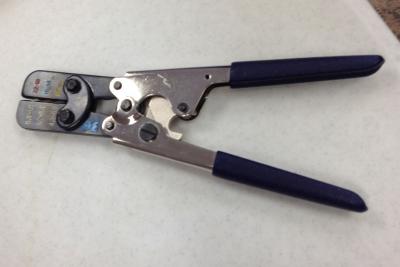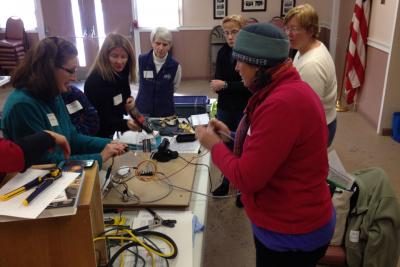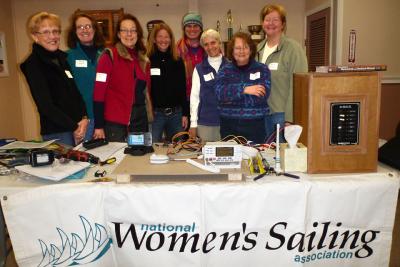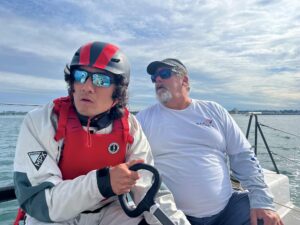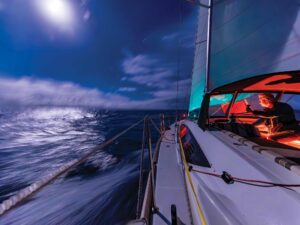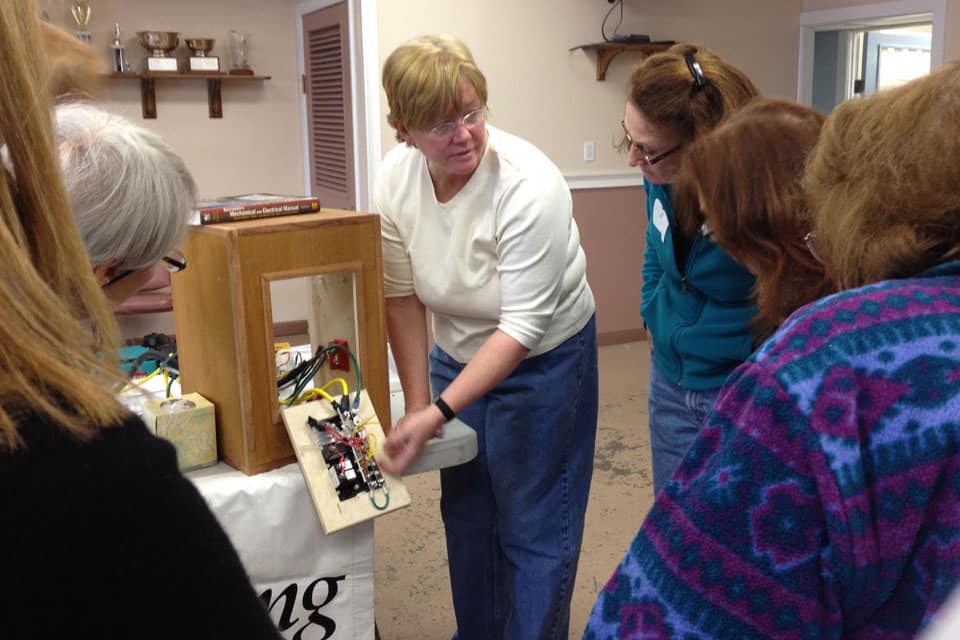
They came with their tool kits in tote bags, their multi meters and their homemade lunches. They came on a cold winter Sunday to the Quonset Davisville Navy Yacht Club in North Kingstown, Rhode Island, having driven hundreds of miles from Maine, Massachusetts, New Hampshire, Connecticut, and New Jersey.
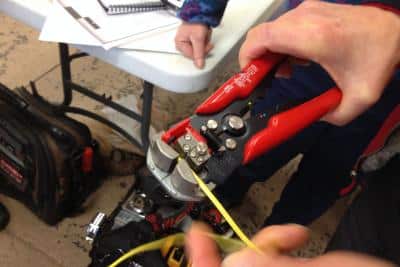
Above and beyond, they came to learn, and learn they did, from very savvy, and most importantly, very understandable, Beth Burlingame. Beth worked hard to prepare for her first teaching workshop and it showed; she came with a truckload of goodies, including handouts and books, a model of a 12-volt electrical switch panel, batteries, wire cutters, ratcheting crimpers, cable ties, connecters, heat shrink terminals and fuses — lots of fuses.
You’d expect no less from someone with her credentials. A master marine technician with the American Boat and Yacht Council, Beth is a 2012 graduate of the marine systems program at the International Yacht Restoration School campus in Bristol, Rhode Island. She designed the workshop herself, and the eight women who were her first class got what they paid for, and then some.
It wasn’t even noon before the light bulb went off for Shaye Robbins, who’d gotten nothing but static when she’d installed a VHF to the console of her Boston Whaler back home in Kittery, Maine.
“This just paid for the cost of attending!” she excitedly said, after Beth opened the back of the display panel and explained the role of grounding wire in making connections work.
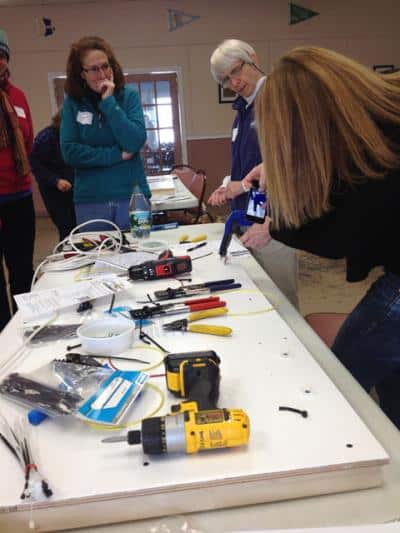
The lessons continued fast and thick and ranged from explanations of the difference between direct and alternating current, starting batteries versus deep cycle batteries, wire gauge size, and the components of a typical inboard DC system.
After a break for lunch, the group successfully, and quickly, pulled off the day’s pièce de résistance: powering up and getting a Garmin 478 GPS and a Standard Horizon GX2100 VHF radio with built-in AIS receiver to communicate with each other. It was yet another eureka moment, and the success of the hands-on drill pleased the fast-learning students, who were thrilled to put their newfound skills to the test on boats back home.
Beth will teach a short form of the workshop at the 13th annual NWSA Take the Helm women’s sailing conference on Saturday, June 7, 2014, at the Corinthian Yacht Club in Marblehead, Massachusetts. For details and to sign up for the program, which covers many topics in addition to electrics — act quickly, as the conference sells out annually — contact the NWSA.
wsf@womensailing.org
www.womensailing.org
Click “next” to see more photos!
